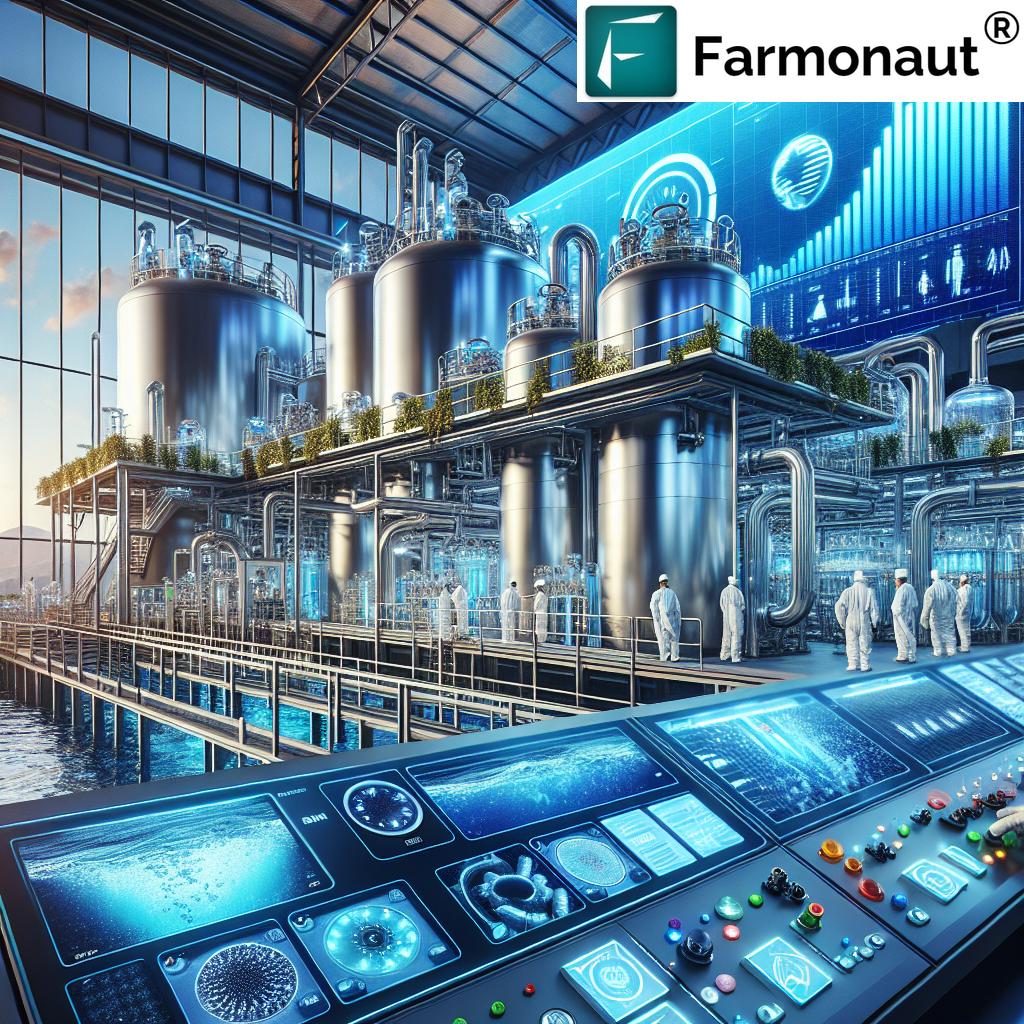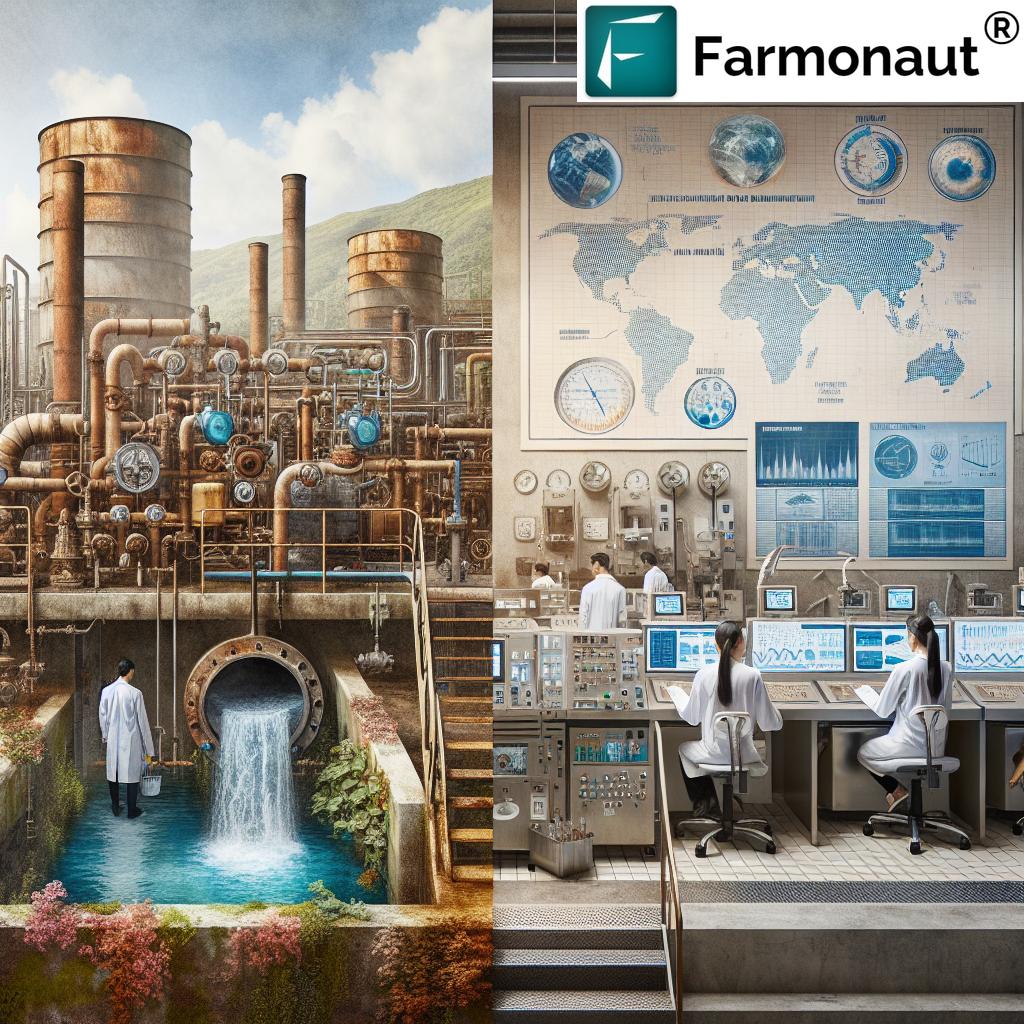Global Water Treatment Chemicals Market Set to Surge: Industry Trends and Forecast 2024-2029
“The global water treatment chemicals market is projected to reach USD 46.64 billion by 2029, driven by industrial and residential demand.”
As we delve into the fascinating world of water treatment chemicals, we find ourselves at the cusp of a significant market transformation. The global water treatment chemicals market is poised for remarkable growth, with projections indicating a surge from USD 38.37 billion in 2024 to an impressive USD 46.64 billion by 2029. This trajectory represents a compound annual growth rate (CAGR) of 4.0%, highlighting the increasing importance of water treatment solutions across various sectors.
In this comprehensive analysis, we’ll explore the driving forces behind this growth, emerging trends, and the impact on different industries and regions. Join us as we navigate through the complexities of this essential market and uncover the opportunities that lie ahead.
Understanding the Water Treatment Chemicals Market
Water treatment chemicals play a crucial role in ensuring the safety and quality of water across residential, commercial, and industrial applications. These chemicals are designed to remove contaminants, neutralize harmful substances, and prevent microbial growth, all while complying with stringent safety and environmental regulations.
The market’s expansion is primarily driven by several factors:
- Rising demand from various industries
- Growing concerns over water scarcity and pollution
- Increasing awareness of waterborne diseases
- Stringent water quality regulations
- Rapid industrialization and urbanization, particularly in developing regions
Let’s take a closer look at some of the key segments and trends shaping the water treatment chemicals market.
Key Market Segments and Growth Drivers
Biocides and Disinfectants: Ensuring Water Safety
Biocides and disinfectants are projected to be the second-largest segment in the water treatment chemicals market. These crucial components play a vital role in:
- Ensuring water safety
- Preventing microbial growth
- Meeting stringent water quality regulations
The increasing demand for biocides and disinfectants is particularly evident in municipal and industrial applications where treated water is essential. As awareness of waterborne diseases grows and industrial activities expand, we expect this segment to continue its upward trajectory.

Cooling Water Treatment: Preventing Corrosion and Scaling
Cooling water treatment is expected to emerge as another significant segment in the market. This growth is driven by the need to prevent corrosion, scaling, and microbial growth in cooling systems across various industries. Key factors contributing to this segment’s importance include:
- Expansion of industries relying on cooling systems (e.g., power generation, chemical processing)
- Stricter environmental regulations regarding water discharge
- Increasing focus on operational efficiency and equipment longevity
As industries continue to expand and modernize, the demand for effective cooling water treatment solutions is expected to rise steadily.
Sustainable Alternatives: The Rise of Bio-based Chemicals
In response to growing environmental concerns and stricter regulations, bio-based chemicals are gaining traction as sustainable alternatives in the water treatment industry. These chemicals, developed from renewable resources, offer several advantages:
- Reduced ecological impact
- Alignment with global sustainability efforts
- Enhanced performance through advancements in biotechnology
The adoption of bio-based chemicals is increasing among industrial and municipal sectors, driven by the growing focus on environmentally friendly practices and the need to meet regulatory requirements.
Market Dynamics: Sales Channels and End-Use Sectors
Distributor Segment: Bridging the Gap
The distributor segment stands out as a critical component of the water treatment chemicals market. Distributors play a vital role in:
- Delivering chemicals to remote regions
- Serving small-to-medium enterprises (SMEs)
- Providing valuable technical support
- Offering flexible purchasing options
As the market continues to grow, the importance of distributors in ensuring efficient supply chains and customer support is expected to increase.
Commercial Sector: Driving Demand
The commercial sector is set to be a significant driver of growth in the water treatment chemicals market. This surge in demand is attributed to:
- Increasing need for treated water in hospitality, healthcare, and retail spaces
- Rapid urbanization and infrastructure expansion
- Heightened awareness of sustainability
- Stricter compliance requirements for water quality regulations
As commercial establishments continue to prioritize water safety and sustainability, we anticipate a steady increase in the adoption of water treatment solutions across this sector.
Regional Insights: Asia Pacific Leading the Charge
“Asia Pacific, led by China and India, is experiencing rapid growth in the water treatment chemicals market due to urbanization.”
The Asia Pacific region is poised to become the second-largest market for water treatment chemicals. This growth is driven by several factors:
- Rapid industrialization and urbanization
- Population growth
- Increasing demand for clean water
- Significant industrial and municipal water management projects
Countries like China and India are at the forefront of this regional growth, undertaking large-scale initiatives to address water management challenges and meet the growing demand for treated water.
Industry Applications and Trends
The water treatment chemicals market serves a diverse range of industries, each with its unique requirements and challenges. Let’s explore some of the key sectors driving market growth:
Food and Beverage Industry
In the food and beverage industry, water treatment chemicals play a crucial role in ensuring product quality and safety. Key applications include:
- Process water treatment
- Wastewater management
- Cleaning and sanitation
As consumer demand for high-quality food and beverages continues to rise, we expect to see increased adoption of advanced water treatment solutions in this sector.
Pharmaceutical Industry
The pharmaceutical industry relies heavily on high-purity water for various processes. Water treatment chemicals are essential for:
- Maintaining stringent quality standards
- Ensuring compliance with regulatory requirements
- Protecting sensitive manufacturing processes
With the continuous growth of the pharmaceutical sector, particularly in emerging markets, the demand for specialized water treatment chemicals is expected to increase significantly.
Power Generation
The power generation industry is a major consumer of water treatment chemicals, particularly for:
- Boiler water treatment
- Cooling tower management
- Wastewater treatment
As the global demand for energy continues to rise and the industry shifts towards more sustainable practices, we anticipate growing investments in advanced water treatment solutions.
Oil and Gas
In the oil and gas industry, water treatment chemicals are critical for:
- Produced water treatment
- Corrosion prevention
- Scale inhibition
- Enhanced oil recovery processes
As the industry faces increasing pressure to reduce its environmental footprint, we expect to see a growing focus on efficient water management and treatment technologies.

Innovative Solutions and Technological Advancements
The water treatment chemicals market is witnessing a wave of innovation, driven by the need for more efficient and sustainable solutions. Some of the key technological advancements include:
Smart Dosing Systems
Smart dosing systems leverage IoT technology and real-time monitoring to optimize chemical usage, resulting in:
- Improved treatment efficiency
- Reduced chemical consumption
- Lower operational costs
These systems are gaining popularity across various industries, particularly in large-scale water treatment facilities.
Nanotechnology-based Solutions
Nanotechnology is revolutionizing water treatment by offering:
- Enhanced contaminant removal capabilities
- Improved efficiency in membrane filtration
- Novel antimicrobial properties
As research in this field continues to advance, we expect to see more nanotechnology-based water treatment chemicals entering the market.
Green Chemistry Innovations
The push towards sustainability is driving innovations in green chemistry, resulting in:
- Development of biodegradable water treatment chemicals
- Increased use of renewable raw materials
- Reduction of harmful by-products
These eco-friendly solutions are gaining traction among environmentally conscious industries and municipalities.
Regulatory Landscape and Compliance Challenges
The water treatment chemicals market is heavily influenced by regulatory frameworks aimed at ensuring water safety and environmental protection. Key aspects of the regulatory landscape include:
Stringent Water Quality Standards
Governments and international organizations are continuously updating and enforcing stricter water quality standards, driving the need for more effective treatment solutions.
Environmental Regulations
Increasing focus on environmental protection is leading to tighter regulations on chemical discharge and waste management, pushing the industry towards more sustainable practices.
Product Safety and Registration
Water treatment chemicals are subject to rigorous safety assessments and registration processes, ensuring their suitability for various applications.
Compliance with these regulations presents both challenges and opportunities for market players, driving innovation and encouraging the development of safer, more environmentally friendly solutions.
Market Challenges and Opportunities
As the water treatment chemicals market continues to evolve, it faces several challenges and opportunities:
Challenges
- Balancing cost-effectiveness with environmental sustainability
- Addressing the growing complexity of water contaminants
- Meeting the diverse needs of different industries and regions
- Navigating the ever-changing regulatory landscape
Opportunities
- Expansion into emerging markets with growing water treatment needs
- Development of innovative, multi-functional treatment chemicals
- Collaboration with technology providers to create integrated solutions
- Leveraging data analytics and AI for optimized treatment processes
By addressing these challenges and capitalizing on the opportunities, market players can position themselves for long-term success in this dynamic industry.
Market Segmentation and Growth Forecast
To provide a clear overview of the water treatment chemicals market’s trajectory, we’ve compiled a comprehensive table showcasing key segments and their projected growth from 2024 to 2029:
| Market Segment | 2024 Estimated Value (USD Billion) | 2029 Projected Value (USD Billion) |
|---|---|---|
| Industrial Sector | 15.35 | 18.66 |
| Commercial Sector | 11.51 | 13.99 |
| Residential Sector | 7.67 | 9.33 |
| Biocides and Disinfectants | 7.29 | 8.86 |
| Cooling Water Treatment | 6.14 | 7.46 |
| Asia Pacific Region | 13.43 | 16.32 |
| – China | 5.37 | 6.53 |
| – India | 3.07 | 3.73 |
| Sustainable Alternatives (Bio-based) | 3.84 | 4.66 |
This table illustrates the significant growth potential across various segments of the water treatment chemicals market, with particular emphasis on the industrial and commercial sectors, as well as the rapid expansion in the Asia Pacific region.
The Role of Technology in Water Treatment
As we look towards the future of water treatment, it’s clear that technology will play an increasingly important role in addressing global water challenges. While our focus has been on chemical solutions, it’s worth noting how digital technologies are complementing and enhancing traditional water treatment methods.
For instance, companies like Farmonaut are leveraging satellite technology and artificial intelligence to monitor and manage water resources in agricultural settings. While not directly involved in water treatment chemicals, these innovative approaches demonstrate the broader technological ecosystem supporting water management efforts.
By combining advanced chemical solutions with cutting-edge monitoring and management technologies, the water treatment industry is poised to make significant strides in efficiency, sustainability, and effectiveness.
Conclusion: A Future of Clean Water and Sustainable Growth
As we conclude our exploration of the global water treatment chemicals market, it’s clear that we’re standing at the precipice of significant growth and innovation. The projected increase to USD 46.64 billion by 2029 underscores the critical importance of water treatment solutions in our increasingly water-stressed world.
Key takeaways from our analysis include:
- The rising demand for water treatment chemicals across industrial, commercial, and residential sectors
- The emergence of sustainable alternatives, such as bio-based chemicals
- The rapid growth of the Asia Pacific market, particularly in China and India
- The critical role of innovation in addressing complex water treatment challenges
- The importance of regulatory compliance and environmental sustainability in shaping market trends
As we move forward, the water treatment chemicals market will continue to play a crucial role in ensuring water safety, promoting sustainability, and supporting global economic growth. By embracing innovation, prioritizing sustainability, and adapting to evolving regulatory landscapes, industry players can contribute to a future where clean, safe water is accessible to all.
FAQ Section
Q1: What are the main drivers of growth in the water treatment chemicals market?
A1: The main drivers include increasing industrial and residential demand, growing concerns over water scarcity and pollution, stricter water quality regulations, and rapid industrialization in developing regions.
Q2: Which region is expected to see the highest growth in the water treatment chemicals market?
A2: The Asia Pacific region, particularly China and India, is projected to experience the highest growth due to rapid industrialization, urbanization, and increasing focus on water quality.
Q3: What role do sustainable alternatives play in the water treatment chemicals market?
A3: Sustainable alternatives, such as bio-based chemicals, are gaining traction due to environmental concerns and stricter regulations. They offer reduced ecological impact while maintaining or improving treatment effectiveness.
Q4: How are technological advancements impacting the water treatment chemicals market?
A4: Technological advancements like smart dosing systems, nanotechnology-based solutions, and green chemistry innovations are improving treatment efficiency, reducing chemical consumption, and promoting sustainability in the industry.
Q5: What are the main challenges facing the water treatment chemicals market?
A5: Key challenges include balancing cost-effectiveness with environmental sustainability, addressing increasingly complex water contaminants, meeting diverse industry needs, and navigating evolving regulatory landscapes.
Earn With Farmonaut
Earn 20% recurring commission with Farmonaut’s affiliate program by sharing your promo code and helping farmers save 10%. Onboard 10 Elite farmers monthly to earn a minimum of $148,000 annually—start now and grow your income!
Farmonaut Subscriptions
For more information on Farmonaut’s satellite-based farm management solutions, visit our API page or check out our API Developer Docs.







